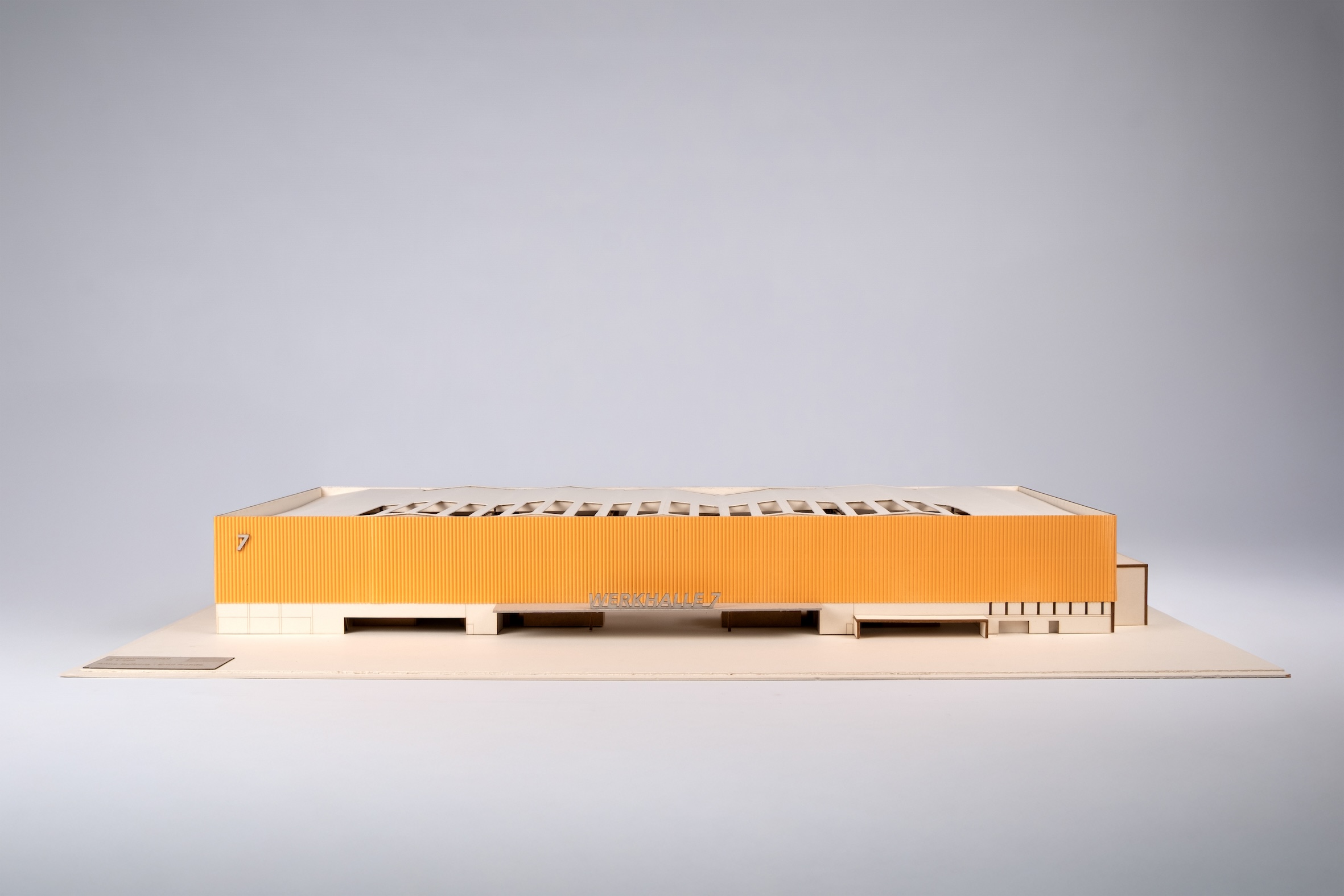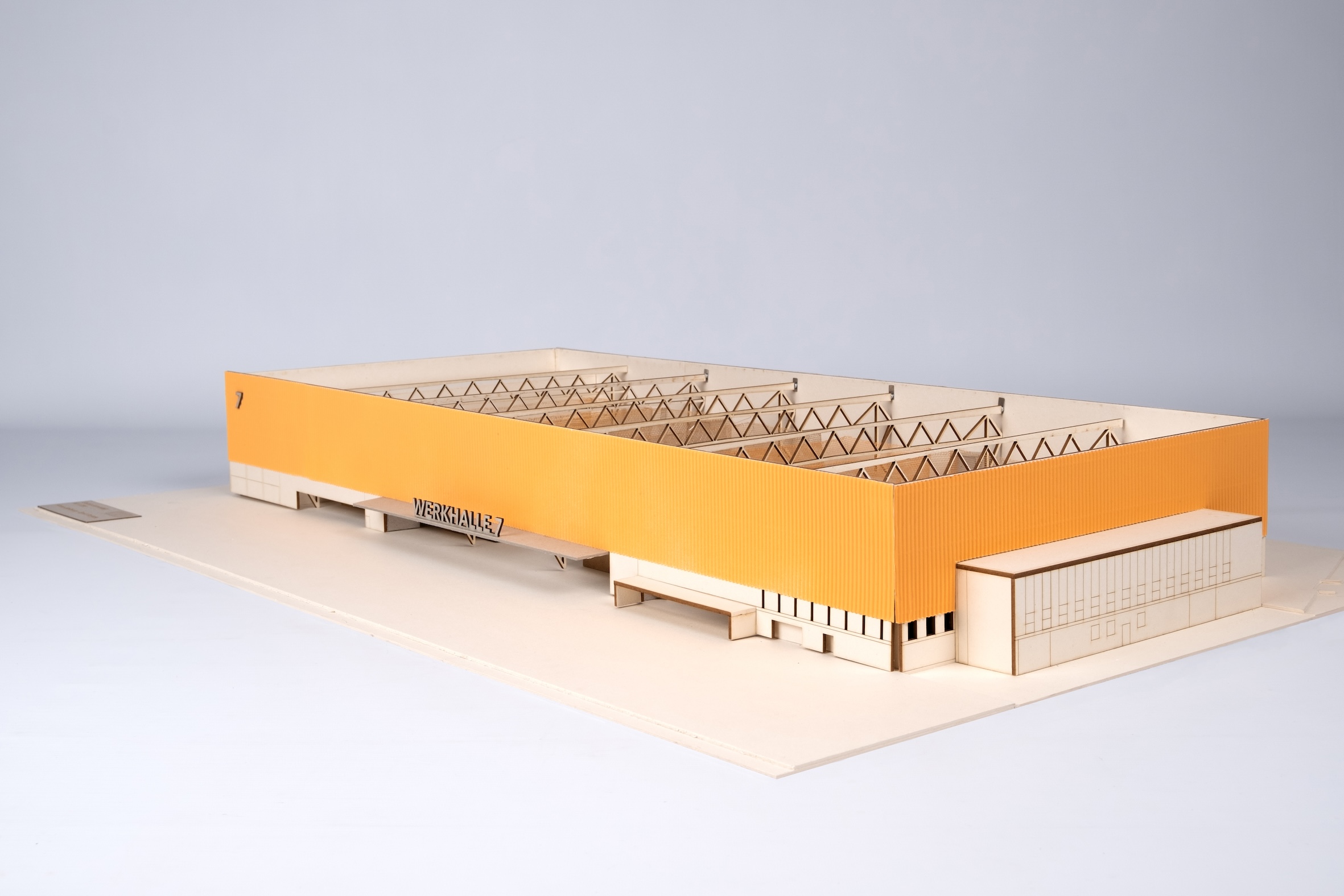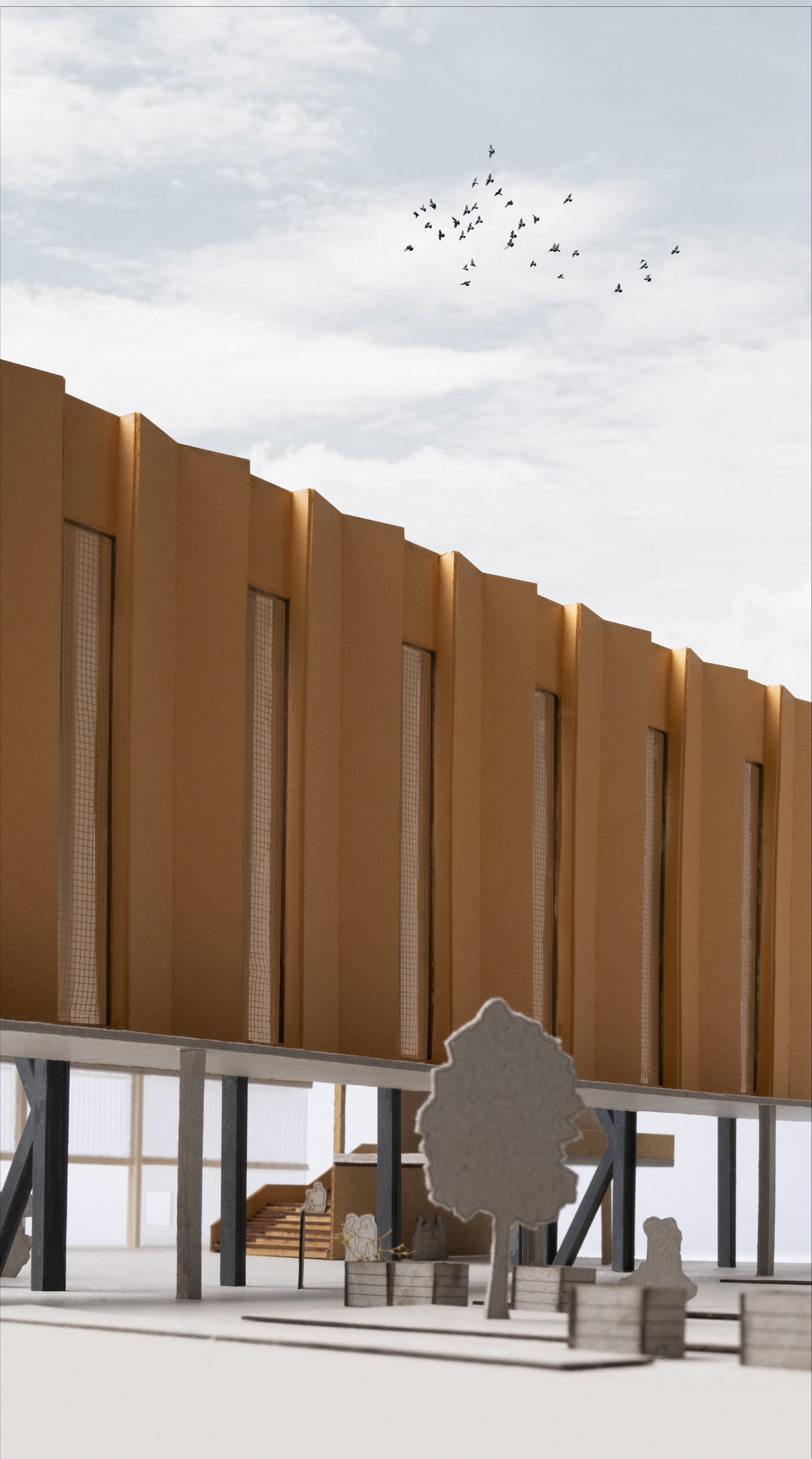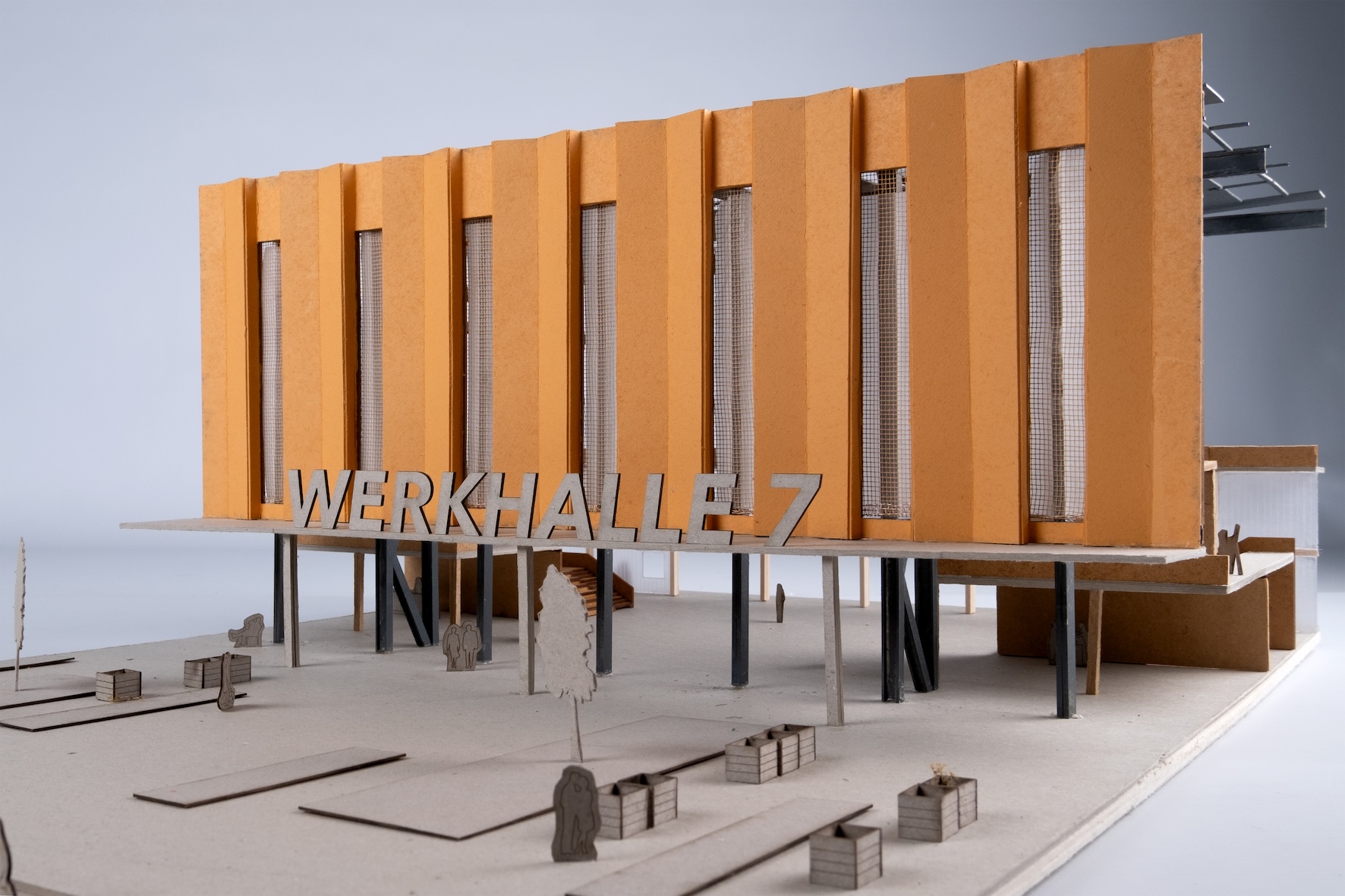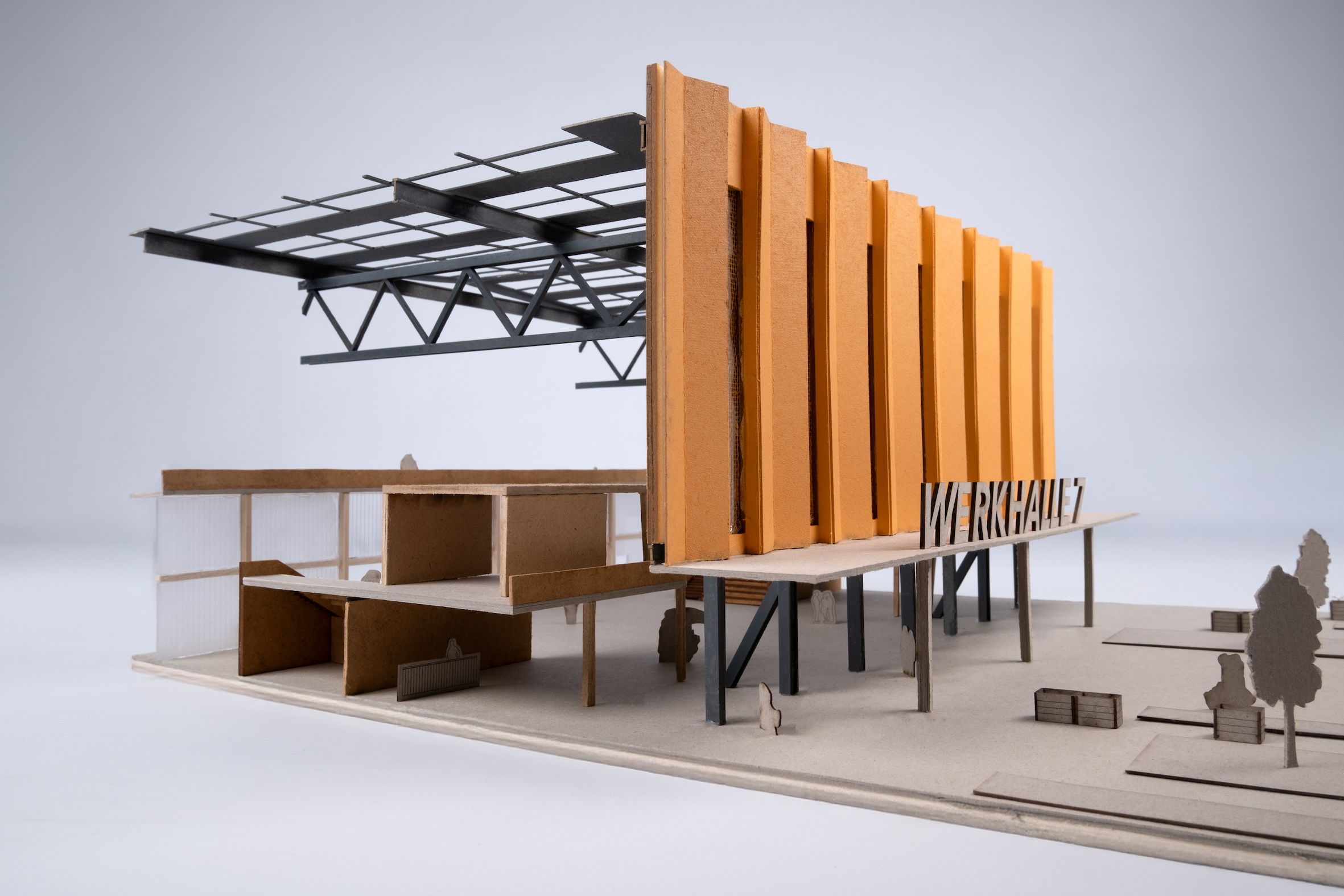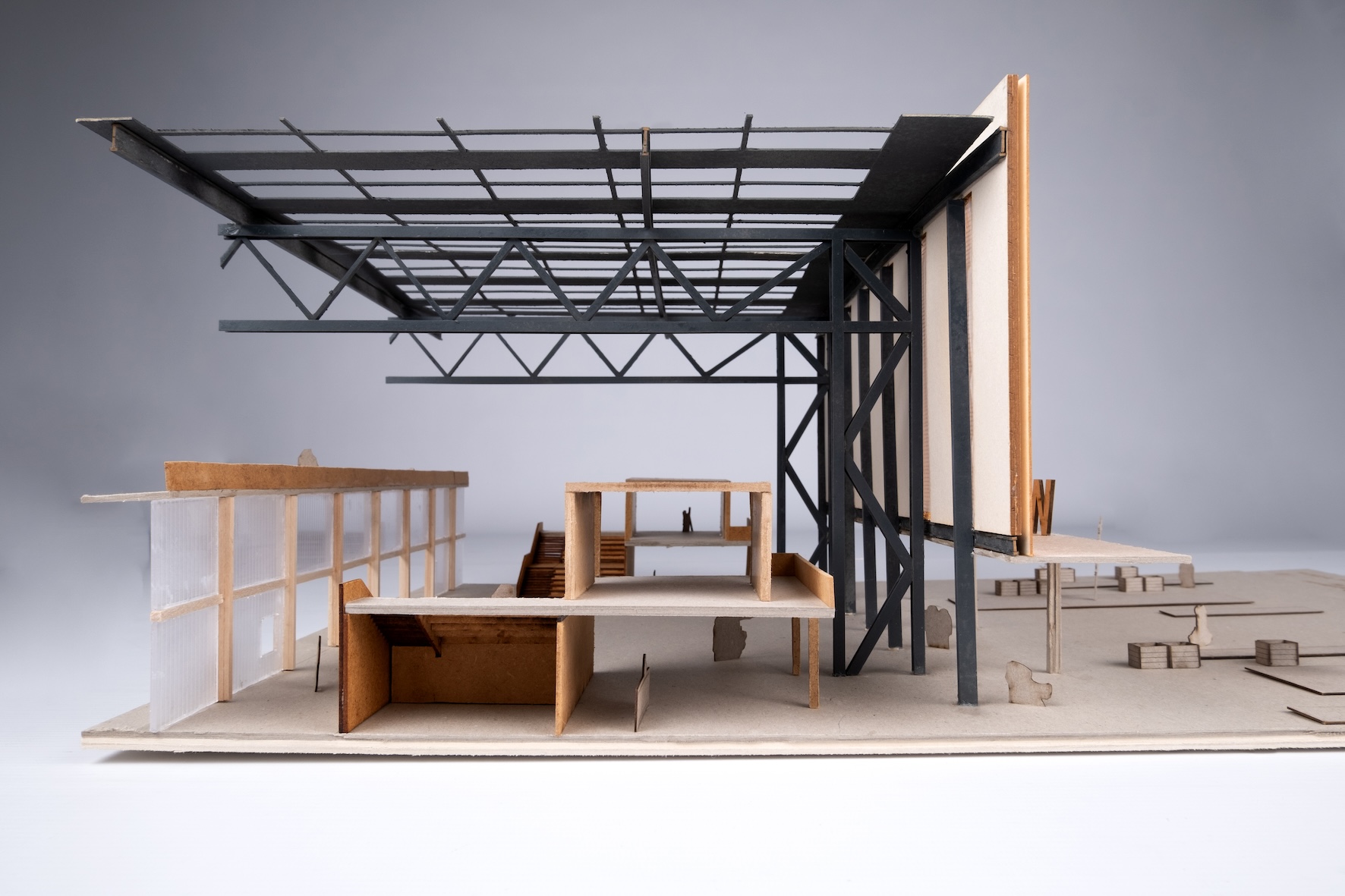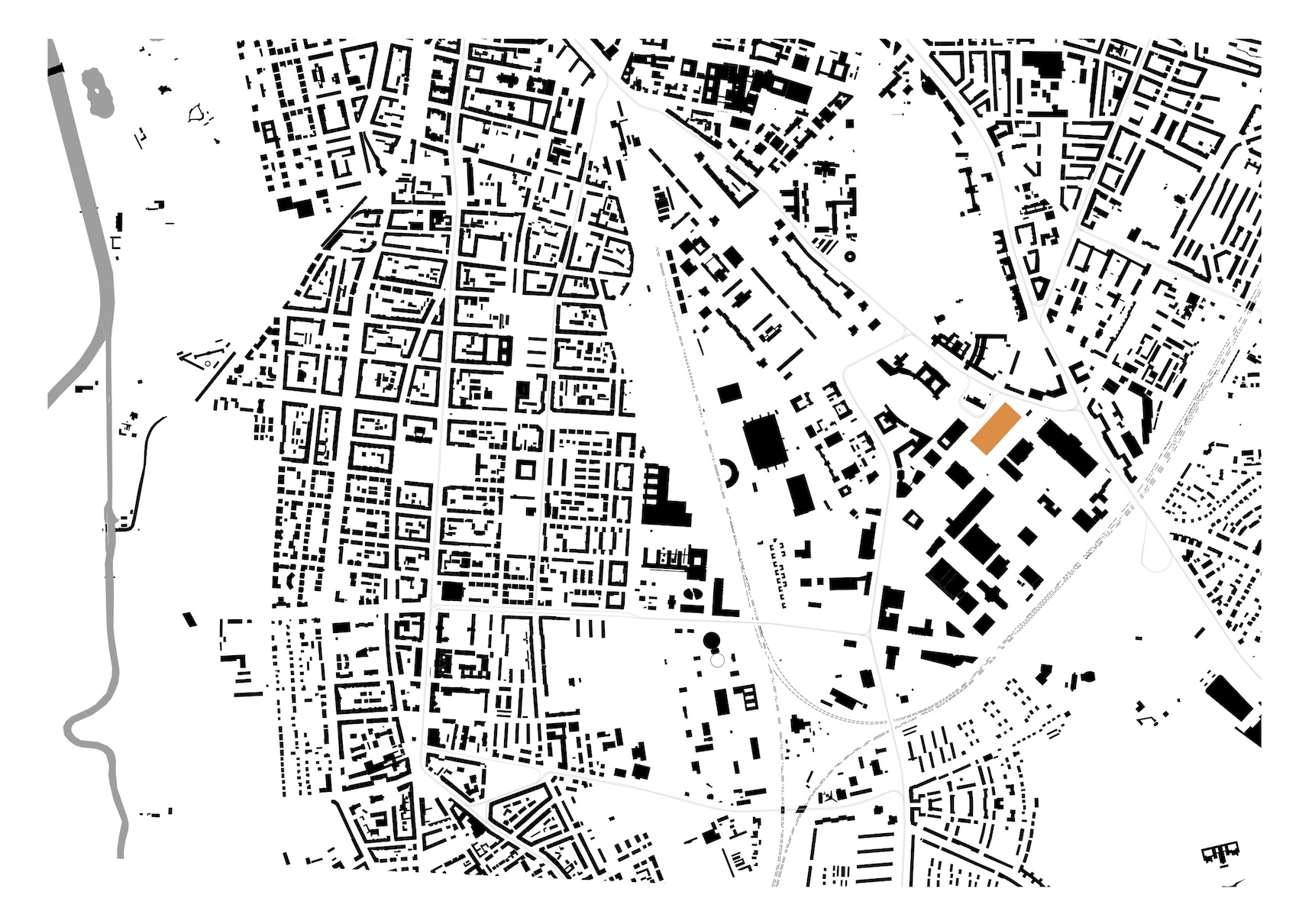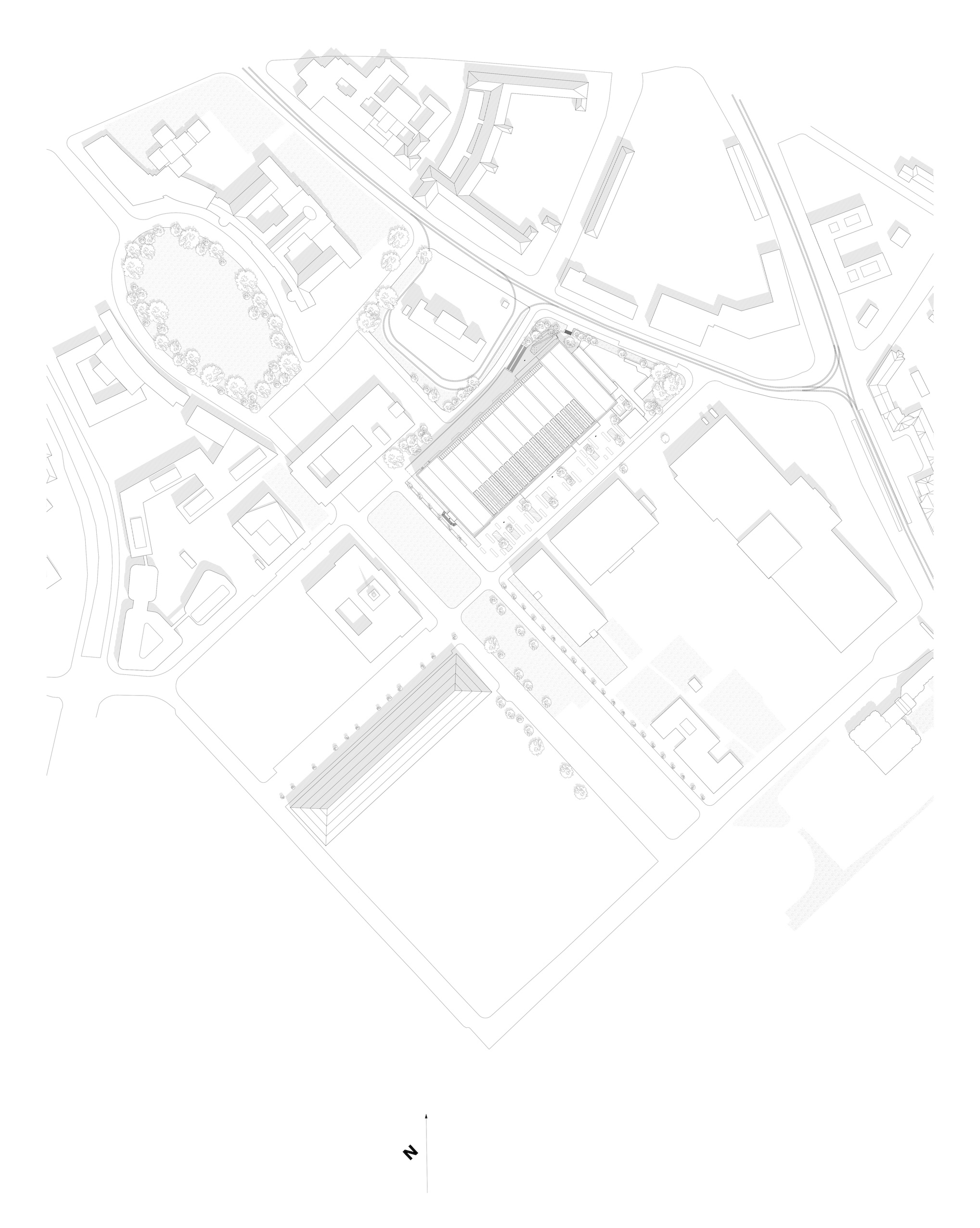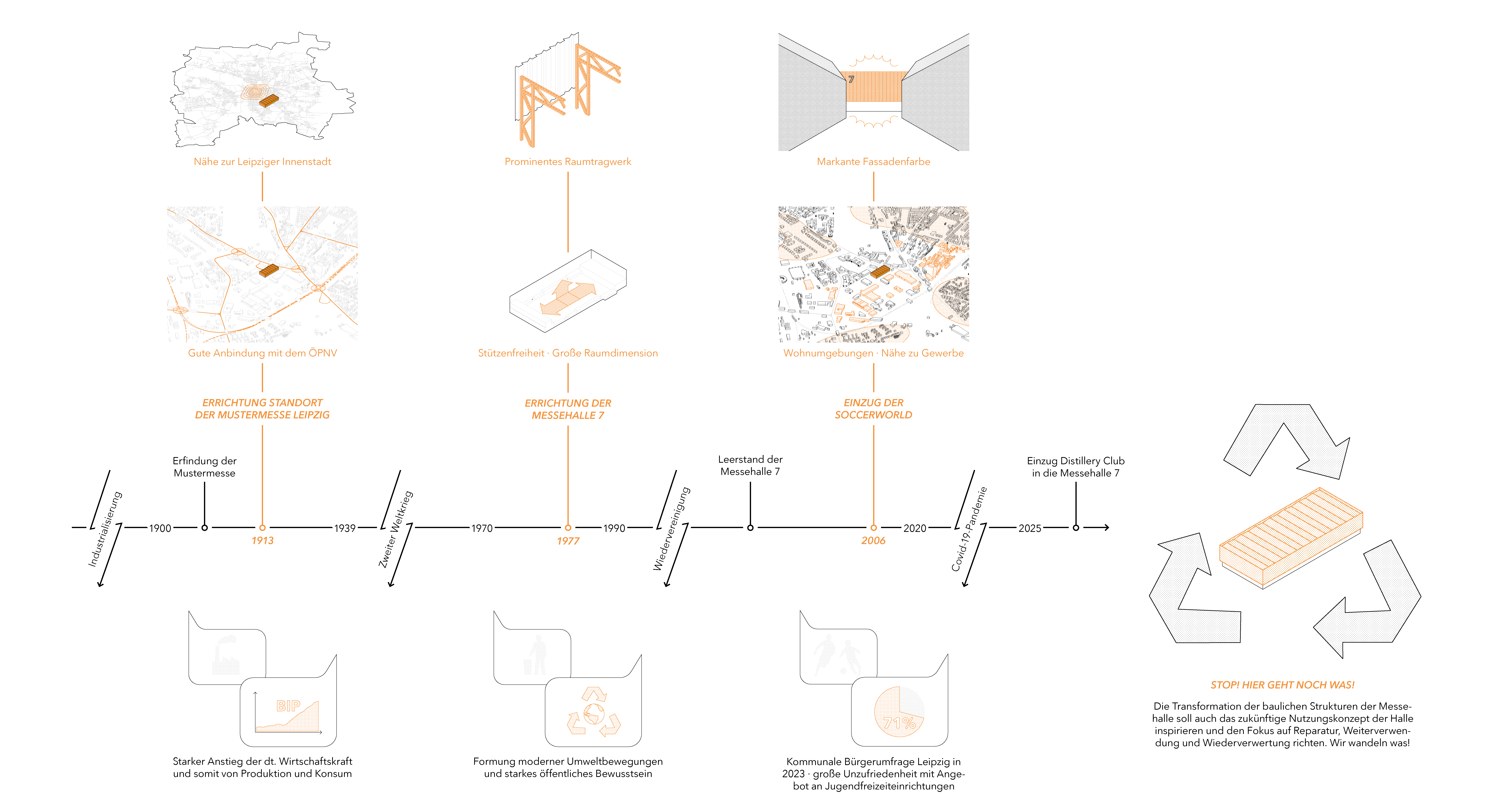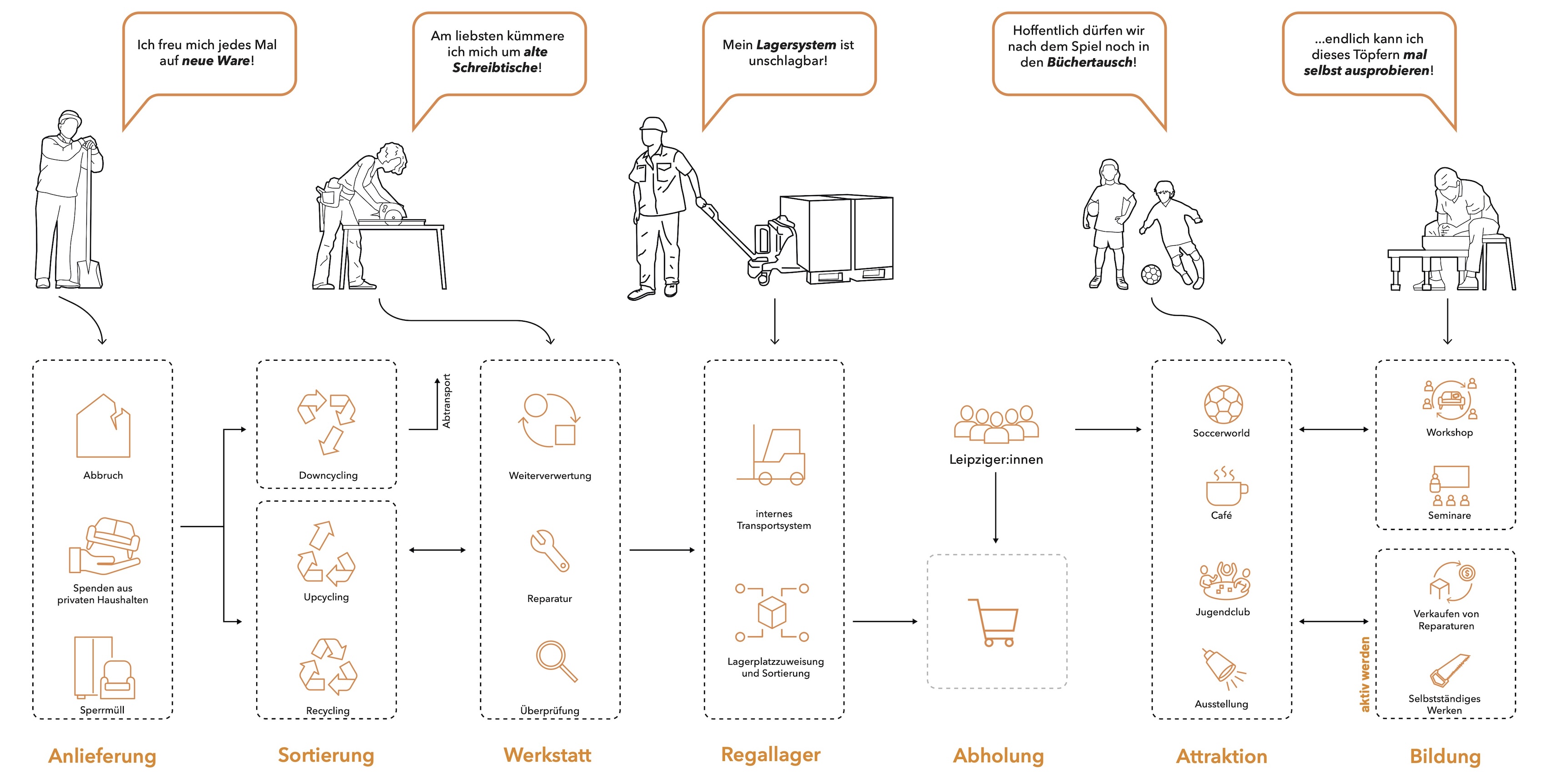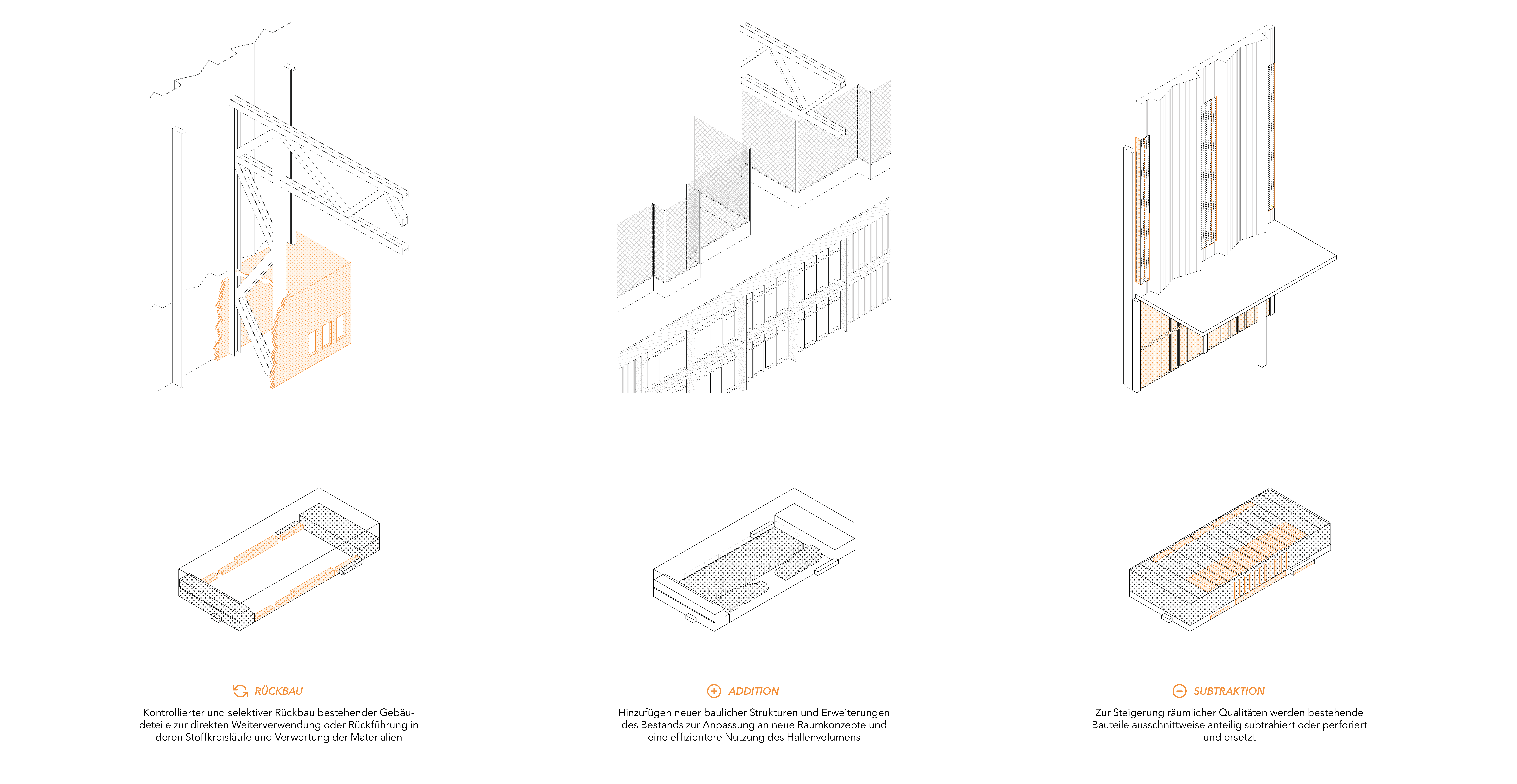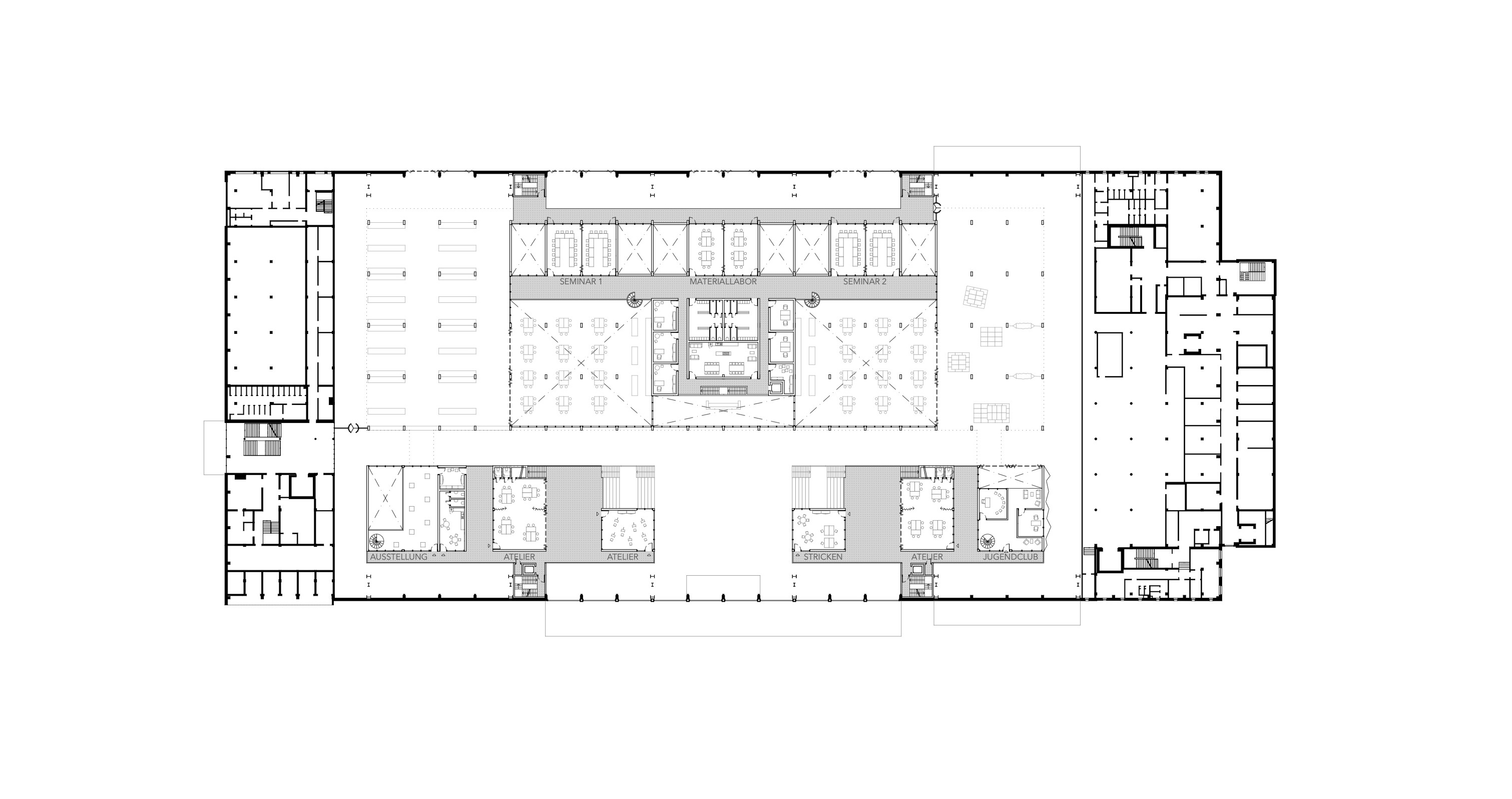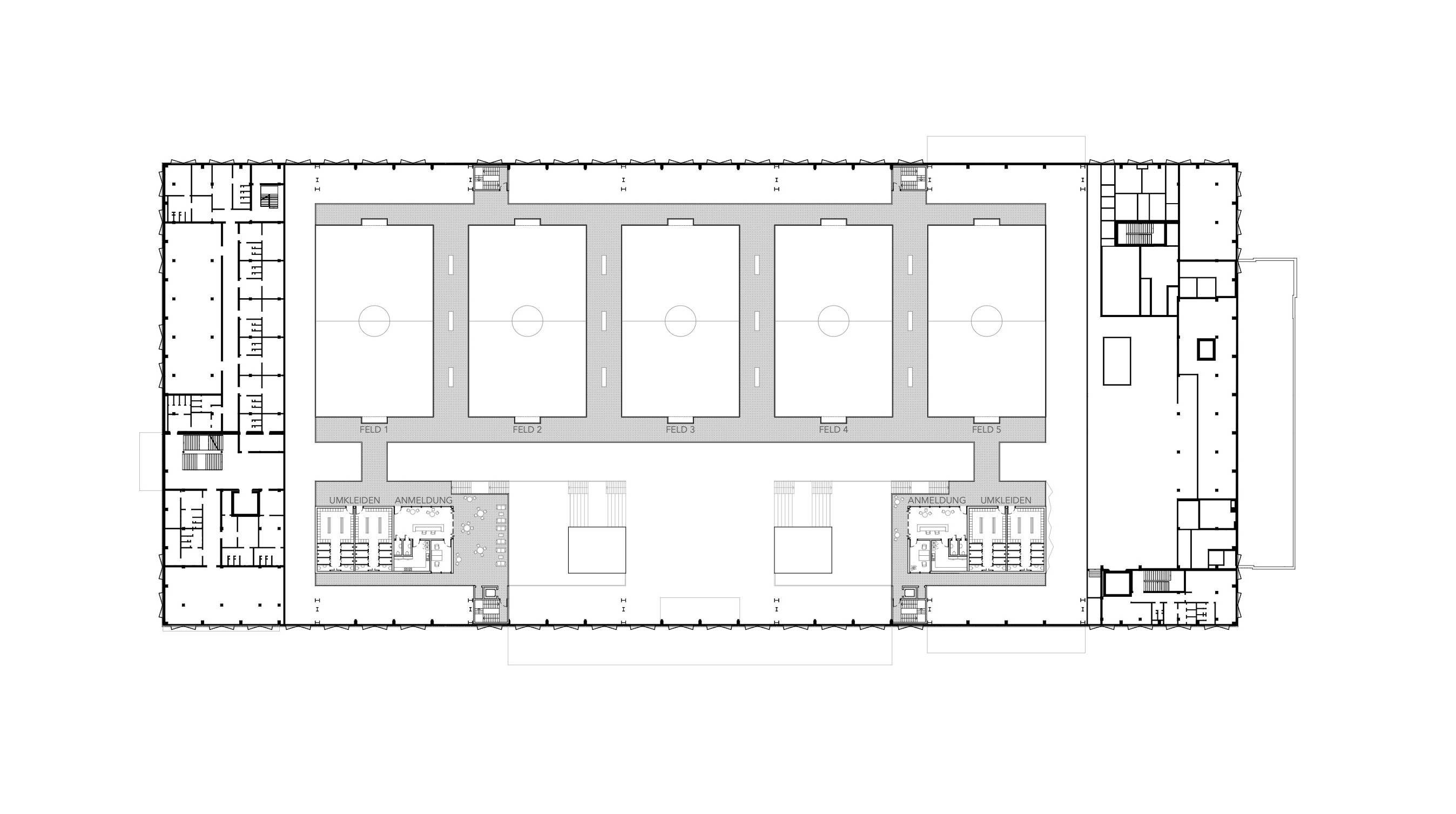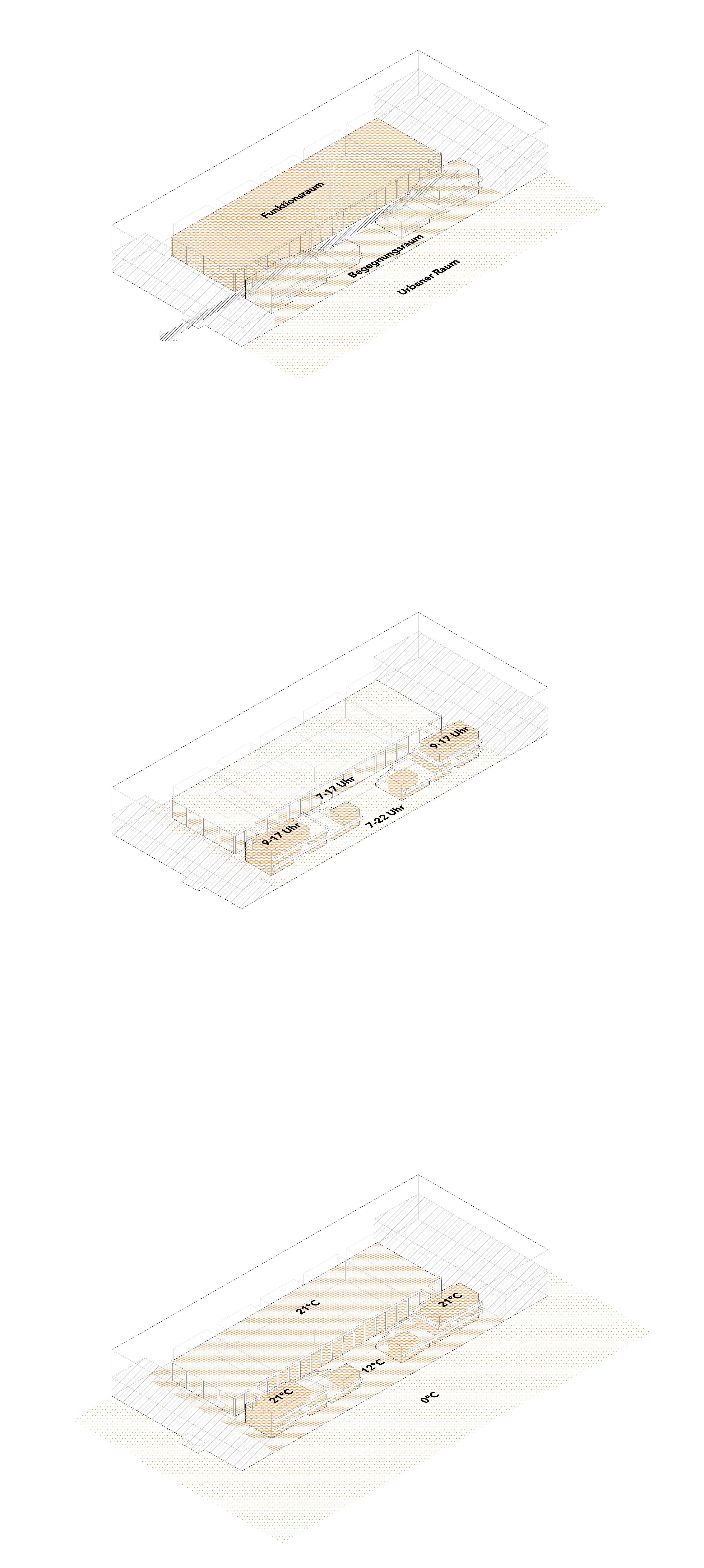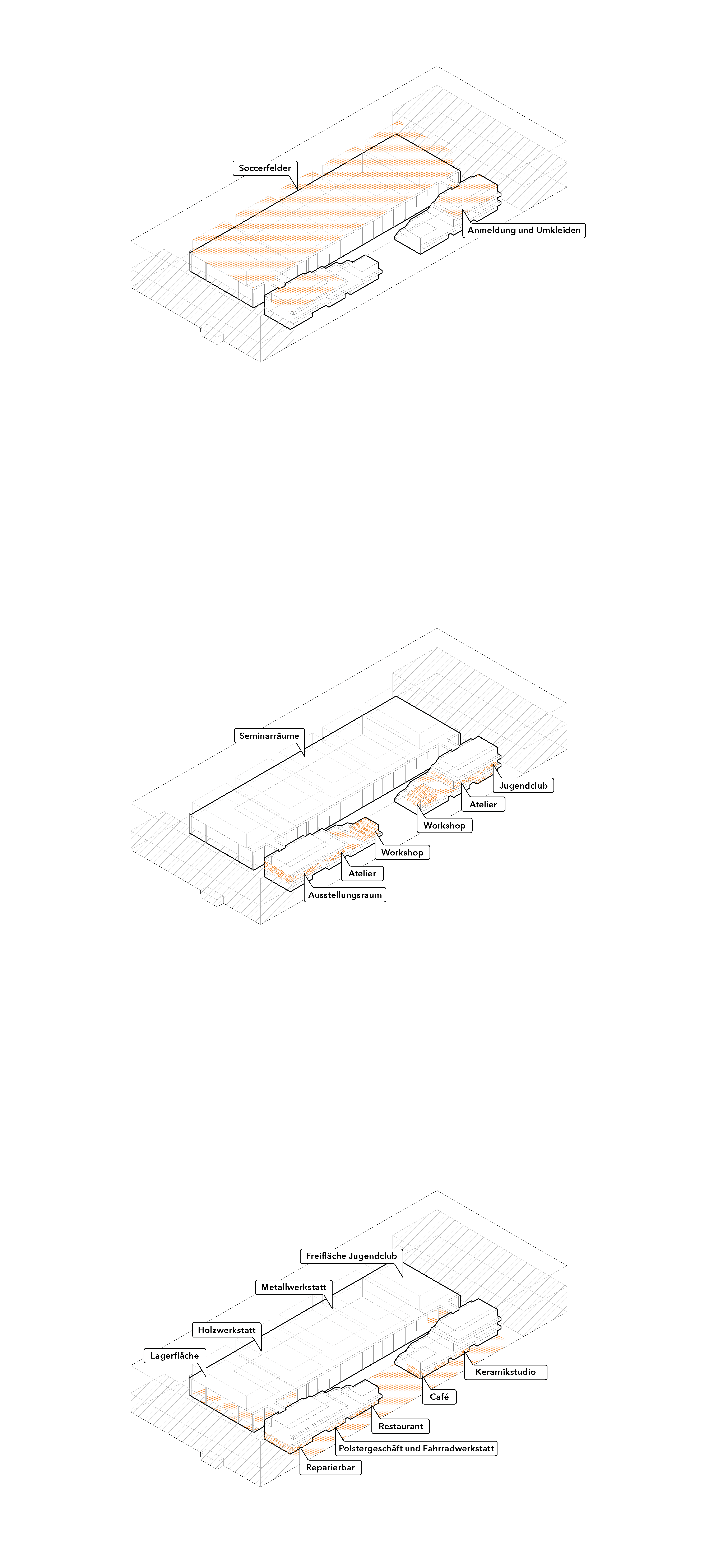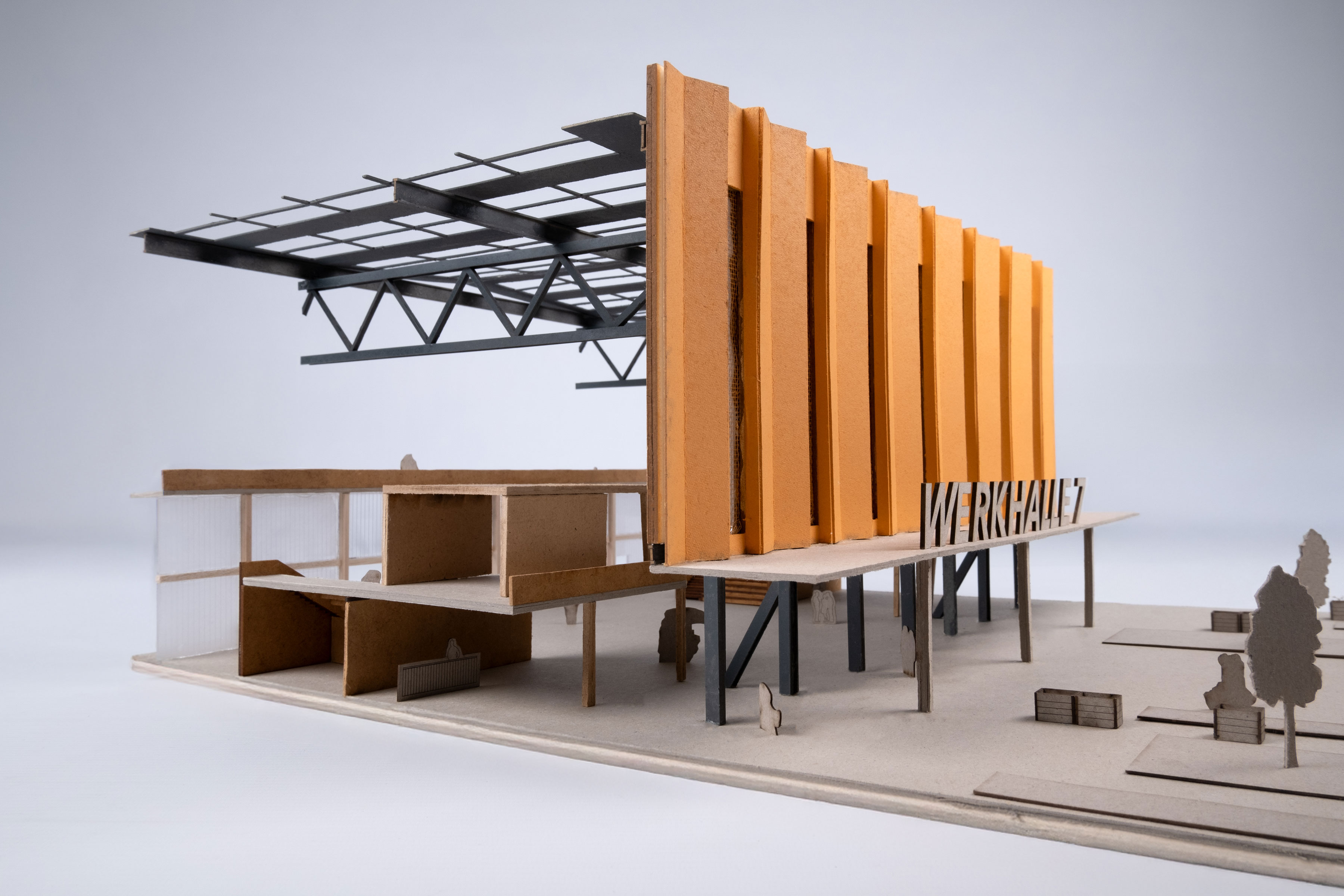
Werkhalle 7
Transformation of the Old Fair Leipzig
Restructuring of an existing exhibition hall
Emil Rohde · Anne Salberg
Term Project Design
M.A. Architecture
HTWK Leipzig
Prof. Dr.-Ing. Annette Menting · Chair of Design-Oriented Building History and Building Culture
01 Mar 2025
From 1913 onwards, the world's first location for the Mustermesse trade fair developed near Leipzig's city centre, accompanied by growing consumption throughout society as a result of industrialisation. Exhibition Hall 7, built on the exhibition grounds in 1977, was used to showcase large machines and was used as a multi-purpose hall for sports and cultural events outside of the trade fair season. After reunification and the relocation of the trade fair centre to the outskirts of the city, the entire site became vacant. In the course of the transformation, primarily consumer-orientated establishments moved into the buildings that had fallen out of use. Since 2006, Soccerworld has been operating ten indoor football pitches in exhibition hall 7, giving it its distinctive colour. The arrival of Tille 2025 in the head building of MH7 will provide initial impetus for mixed use. This potential can be used to meet the desire for more youth leisure facilities close to the city centre. The transformation of the site and its reutilisation as "Werkhalle 7" will thus become a model for society's approach to issues such as consumption, resource conservation and reuse. Soccerworld will be used in a reduced form, as a highly frequented but chargeable contact point for sporting activities and supplemented by other publicly accessible and free uses. The utilisation concept includes a youth centre, repair shops and a wood and metal workshop, which convey the desired rethinking in a practical way. Architecturally, the building is divided into three zones that are orientated towards the existing building. Access is via a neighbourhood square on the prominent south-east façade, while a large glass façade opens up the building to the outside. A central square gesture continues the urban outdoor space inside, while wide staircases lead symmetrically to the upper levels. Behind this, the open axis emphasises the dimensions of the hall. The north-western, more functional area houses the workshops and the materials store, as well as the open-air youth club area. Access roads at the rear enable deliveries and collections. The infrastructural qualities, the historical value and the high demand for social infrastructure and sustainable education speak in favour of preserving the exhibition hall and developing it further as a versatile, urban meeting place that socially anchors the transfer of necessary knowledge on resource-conserving use.
